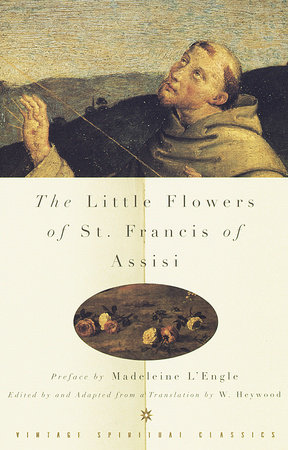READERS GUIDE
"God is our home but many of us have strayed from our native land. The venerable authors of these Spiritual Classics are expert guides–may we follow their directions home."–Archbishop Desmond Tutu
The Vintage Spiritual Classics present the testimony of writers across the centuries who have pondered the mysterious ways, unfathomable mercies, and deep consolations afforded by God to those who call upon Him from out of the depths of their lives. These writers are our companions, even our champions, in a common effort to discern the meaning of God in personal experience.
The questions, discussion topics, and background information that follow are designed to enhance your group’s reading of the six works that make up the first series in Vintage Spiritual Classics. We hope they will provide you with a variety of ways of thinking and talking about these ancient and important texts.
We offer this word about the act of reading these spiritual classics. From the very earliest accounts of monastic practice–dating back to the fourth century–it is evident that a form of reading called lectio divina ("divine" or "spiritual" reading) was essential to any deliberate spiritual life. This kind of reading is quite different from that of scanning a text for useful facts and bits of information, or advancing along an exciting plot line to a climax in the action. It is, rather, a meditative approach, by which the reader seeks to taste and savor the beauty and truth of every phrase and passage. There are four steps in lectio divina: first, to read, next to meditate, then to rest in the sense of God’s nearness, and, ultimately, to resolve to govern one’s actions in the light of new understanding. This kind of reading is itself an act of prayer. And, indeed, it is in prayer that God manifests His Presence to us.
Introduction
More than a century after his death in 1226, a collection of stories about the life of St. Francis of Assisi was translated from original Latin accounts into Italian and became known as "The Little Flowers." While their form is often borrowed from medieval tales, their surface charm is belied by the deep truths of the spiritual life they can still reveal to us.
Surrendering to God in complete obedience; embracing poverty to free oneself from the claims of this world; taking to heart the Gospel mandate to "Go forth and preach to all nations"; acquiring a deepening love for all God’s creatures–these are among the lessons that the adventures of St. Francis and his first companions can provide.
Questions and Topics for Discussion
1. St. Francis is famously associated with the birds and animals. Which anecdotes here are particularly informative about his approach to the animals and the natural world? Focusing particularly on his “Canticle of the Sun” [p. 117-18), how would you describe his attitude toward God’s creation?
2. What does it mean to be “a fool for Christ”? Which stories most powerfully illustrate this philosophy of St. Francis? Is its purpose largely evangelical and theatrical–the behavior of the “fool” persuades others to follow Christ–or does its purpose have more to do with the individual’s relationship with Christ and the effort to abnegate the self?
3. What is the attitude toward the body that was embraced by St. Francis and his followers? Notice that in several stories a cure from illness is shortly followed by a happy death [see p. 101, for instance]. How does St. Francis attempt to instruct us in our attitude toward death?
4. Medieval narratives about the lives of the saints are quite different from what the modern reader is used to, since the medieval author was writing for an audience which believed completely in the miraculous. What aspects of this book seem particularly “naive” in style? What role do visions and miracles play in these tales? In order to be proper readers of this text, do we need to makes ourselves receptive to the miraculous, to suspend our disbelief? Medieval narratives often have a strong moral or didactic purpose. How does the author of these tales attempt to change the lives of his readers? How does he use stories of punishment and reward to warn his readers?
5. The trials of Father John [pp. 104-8] are reminiscent of the story of Job in the Hebrew Bible, in which God tests a seemingly perfect man. What does this story tell us about God’s seeming fickleness and cruelty? If you have read Job, how does this story differ from it? In what other tales does the author draw upon precedents from the Bible as a model?
Suggested Reading
Peter Brown,
The Body and Society: Men, Women and Sexual Renunciation in Early Christianity; T. S. Eliot,
Four Quartets;
The Epistles of Saint Paul; Edward Gibbon,
The Rise and Fall of the Roman Empire;
The Gospels; Sue Halpern,
Migrations to Solitude; Thich Nhat Hanh,
Peace Is Every Step,
Living Buddha,
Living Christ; Jon Kabat-Zinn,
Wherever You Go, There You Are; Thomas Merton,
The Seven-Storey Mountain; Thomas Moore,
Care of the Soul; Norvene Vest,
No Moment Too Small: Rhythms of Silence, Prayer, and Holy Reading; Clifton Waters (trans.),
The Cloud of Unknowing and Other Works.

